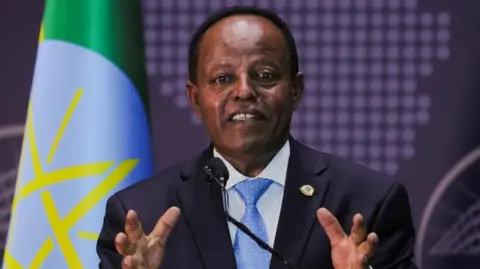Ethiopia, officially the Federal Democratic Republic of Ethiopia, is a landlocked country in the world and is located in the Horn of Africa.
EARLY POLITICAL HISTORY OF ETHIOPIA
The Government of the Ethiopian Empire was historically based on the framework of absolute monarchy with feudal system, where religious legitimacy and wealthier class generally prone priority.
Ethiopia defeated an Egyptian invasion in 1876 and an Italian invasion in 1896 which killed 17,000 Ethiopians, and came to be recognized as a legitimate state by European powers.
TRANSMISSION OF POWER IN ETHIOPIA
It is tempting to start an analysis of how power is organized and exercised in Ethiopia by going back to 1991, when the Tigray People’s Liberation Front (TPLF) overthrew the military junta (‘Derg’) under Mengistu Haile Mariam and brought 17 years of rebellion-cum-liberation struggle to an end. It was a watershed moment that ended a prolonged period of harsh oppression in which tens of thousands of Ethiopians disappeared, perished, fled or were imprisoned. It was also the start of the period 1991–95 in which Ethiopia’s current political settlement was forged between the different political parties that make up the Ethiopian People’s Revolutionary Democratic Front (EPRDF).
However, taking 1991 as a starting point risks putting too much emphasis on contemporary factors that influence Ethiopia’s political settlement, and too little on historical ones, producing an unbalanced understanding of its evolution. Indeed, a more appropriate historical marker is the reign of Menelik II (1889–1913) as it was under his rule that the Ethiopian empire was consolidated administratively and became a lasting political fixture of modern East Africa after the defeat of Italian colonial forces at the battle of Adowa (1896). It acquired more or less its present form through a series of campaigns resulting in the conquest of both the highland periphery of the Ethiopian plateau and the lowlands surrounding it. Ethiopia’s ability to avoid all but a very short period of direct colonial rule has enabled its rulers to chart an autonomous path of national development, which has involved dealing with friction between its diverse social forces, and experimenting with various modes of governance and the organization of security.
ETHIOPIA’S POLITICAL SETTLEMENT
An examination of Ethiopia’s history since 1889 suggests a number of historical (between 1889 and 1991) and contemporary (between 1991 and 2015) factors that have influenced the evolution of the country’s political settlement. Table 1 provides a brief summary of these factors, which are then analyzed to generate the basic political parameters of the organization of security in Ethiopia.
Table 1
Factors influencing the evolution of Ethiopia’s political settlement
| Historical (1889–1991) | Contemporary (1991–2015) |
| 1. A legacy of centralization, control and coercion continues to influence styles of rule and administrative approaches | 1. The partial transition of the TPLF/EPRDF from movement to political party creates strong leadership structures that rest partly on internal control and a lack of external transparency |
| 2. A legacy of exclusionary rule with ethnic undertones limits broader distribution of power and risks counter-mobilization(s) | 2. The expectation that TPLF/EPRDF rule will continue perpetuates a single-party monopoly |
| 3. The volatility and insecurity of the region requires and perpetuates securitized approaches to (political) conflict | 3. Political power and economic interests are fused and harnessed to a national strategy of state-led economic development. |
POLITICAL STUCTURE OF ETHIOPIA
The politics of Ethiopia are the activities associated with the governance of Ethiopia. The government is structured as a federal parliamentary republic with both a President and Prime Minister. The government is multicameralism with a house of representative and a council. The term politics of Ethiopia mainly relates to the political activities in Ethiopia after the late 20th century when the democratization took place in the nation.
The government of Ethiopia is structured in the form of a federal parliamentary republic, whereby the Prime Minister is the head of government. Executive power is exercised by the government while legislative power is vested in the Parliament. The Judiciary is more or less independent of the executive and the legislature. There are 10 ethnically based administrative regions and 2 self-governing administrations; the capital city Addis Ababa and Dire Dawa.
The president of Ethiopia is elected by the House of Peoples’ Representatives for a six-year term. The prime minister is chosen by the parliament. The prime minister is designated by the party in power following legislative elections. The Council of Ministers, according to the 1995 constitution, is comprised by the Prime Minister, the Deputy Prime Ministers, various Ministers and other members as determined and approved by the House of Peoples’ Representatives. At the current time, this includes the 20 members of Council of Ministers.
The Federal Parliamentary Assembly has two chambers: the Council of People’s Representatives (Yehizbtewekayoch Mekir Bet) with 547 members, elected for five-year terms in single-seat constituencies; and the Council of the Federation (Yefedereshn Mekir Bet) with 110 members, one for each nationality, and one additional representative for each one million of its population, designated by the regional councils, which may elect them themselves or through popular elections.
The president and vice president of the Federal Supreme Court are recommended by the prime minister and appointed by the House of People’s Representatives; for other federal judges, the prime minister submits candidates selected by the Federal Judicial Administrative Council to the People’s Representatives for appointment.
CONCLUSION
The current political structure of Ethiopia was formed after the Tigrayan People’s Liberation Front (TPLF) overthrew Dictator President Mengistu Haile Mariam in 1991. General election was held in June 1994 and Ethiopia has maintained a multiparty political environment till today.


